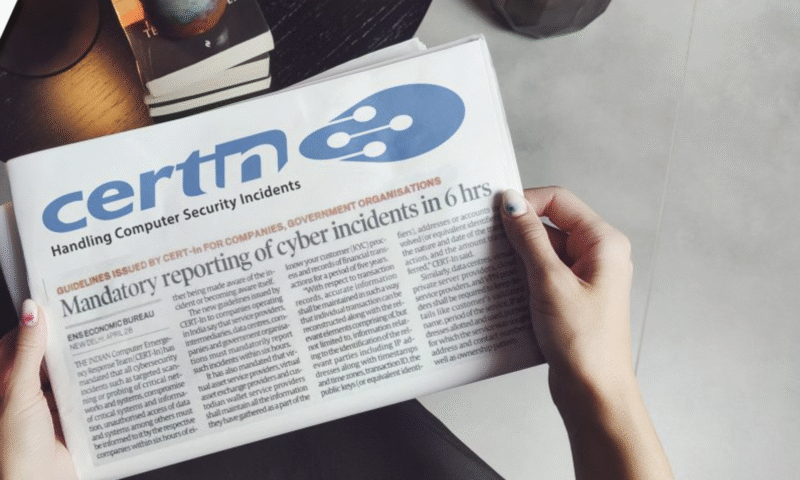
[CIVN-2025-0236] Multiple Vulnerabilities in Google Chrome for Desktop
—–BEGIN PGP SIGNED MESSAGE—–
Hash: SHA256
Multiple Vulnerabilities in Google Chrome for Desktop
Indian – Computer Emergency Response Team (https://www.cert-in.org.in)
Severity Rating: HIGH
Software Affected
Google Chrome versions prior to 141.0.7390.54 for Linux
Google Chrome versions prior to 141.0.7390.54/55 for Windows and Mac
Overview
Multiple vulnerabilities have been reported in Google Chrome which could allow a remote attacker to execute arbitrary code, bypass security restrictions, cause denial-of-service (DoS) or disclose sensitive information on the targeted system.
Target Audience:
All end-user organizations and individuals using Google Chrome for Desktop.
Risk Assessment:
High risk of remote code execution.
Impact Assessment:
Potential for unauthorized data access or sevice disruption.
Description
Google Chrome is a popular internet browser that is used for accessing the information available on worldwide web. It is designed for use on desktop computers, such as those running on windows, macOS, or Linux operating system.
Multiple vulnerabilities exist in Google Chrome due to Heap buffer overflow in WebGPU and Video; Side-channel information leakage in Storage and Tab; Inappropriate implementation in Media, Omnibox, and Storage; Out of bounds read in Media; Off by one error in V8; Use after free in V8. A remote attacker could exploit these vulnerabilities by persuading a victim to visit a specially crafted web page.
Successful exploitation of these vulnerabilities could allow a remote attacker to execute arbitrary code, bypass security restrictions, cause denial-of-service (DoS) or disclose sensitive information on the targeted system.
Solution
Apply appropriate updates as mentioned by the vendor
https://chromereleases.googleblog.com/2025/09/stable-channel-update-for-desktop_30.html
Vendor Information
Google Chrome
https://chromereleases.googleblog.com/2025/09/stable-channel-update-for-desktop_30.html
References
Google Chrome
https://chromereleases.googleblog.com/2025/09/stable-channel-update-for-desktop_30.html
CVE Name
CVE-2025-11205
CVE-2025-11206
CVE-2025-11207
CVE-2025-11208
CVE-2025-11209
CVE-2025-11210
CVE-2025-11211
CVE-2025-11212
CVE-2025-11213
CVE-2025-11215
CVE-2025-11216
CVE-2025-11219
– —
Thanks and Regards,
CERT-In
Incident Response Help Desk
e-mail: incident@cert-in.org.in
Phone: +91-11-22902657
Toll Free Number: 1800-11-4949
Toll Free Fax : 1800-11-6969
Web: http://www.cert-in.org.in
PGP Fingerprint: A768 083E 4475 5725 B81A A379 2156 C0C0 B620 D0B4
PGP Key information:
https://www.cert-in.org.in/s2cMainServlet?pageid=CONTACTUS
Postal address:
Indian Computer Emergency Response Team (CERT-In)
Ministry of Electronics and Information Technology
Government of India
Electronics Niketan
6, C.G.O. Complex
New Delhi-110 003
—–BEGIN PGP SIGNATURE—–
iQIzBAEBCAAdFiEE6r4Iam/Ey0c/KakL3jCgcSdcys8FAmjf2f8ACgkQ3jCgcSdc
ys9AUBAAi6SDDzwn9FhlRslPDluZFqDjccPOiw/dKo6AuuwiPd1B0rUVejS+UzTz
hw6vi3uhFo1z9hZw9oE+jxh0IV4Y8EBPX80Luwa1Jq62P6YBjIvwFneyB+pGqJqE
4z1BzQ+6OHEc1FYkEoTPLixmJT4VK1YDOe+PtAbQ1XpRisxy3HD7K5QRoqZUQWuG
UrnX/yjpJoY+o3I5cAN9+z6byv35CDXpfD41iBvKb1t5vxxD9tlKFNlXVR1xFIXo
3Cn0S0djoK8j6o0RkT/xerIPJzWBbmLz+84Eg8uvKFGTY8Rmpc1MyOkMaibMO79p
y55KARm+gDFxShtfBgXSd9iUpu/6lP3v8oJnwGFfv5NJw6G9bzzuqIIHTOSoxQN2
A0AqBPETyYx4KFxTCHx9fzfsm7x9Jf1UBavc/jHvwcNzRxpoJjoRrT3ExAq9QI4/
HGRPZ+2KiLlk7Mir0R9KtmtQNkFeuUPKavc1DHZT5fHe2kvIW7UK9ierTzfWA4MD
IqAp8mFyzEb/jM9Vohh6HA4ZLJM7QotxfJ2r4btW3D8jZjnJ63Vdcd161GPGTqL8
xR1Qg3apptkcr3IpZrsJrt7uqseAG/T0HHXiESSn/WrO3GIznl/q9dXU7KKuQWDj
28g2KKwZQfKZGY2gyU5DhBubESF6qYiGA2Kw8bw+LWo6ABgPgm0=
=c5dm
—–END PGP SIGNATURE—–

![[CIAD-2025-0055] WhatsApp Account takeover campaign (GhostPairing)](https://teamwin.in/wp-content/uploads/2025/06/certin-new-e1751351599950-500x383.png)

